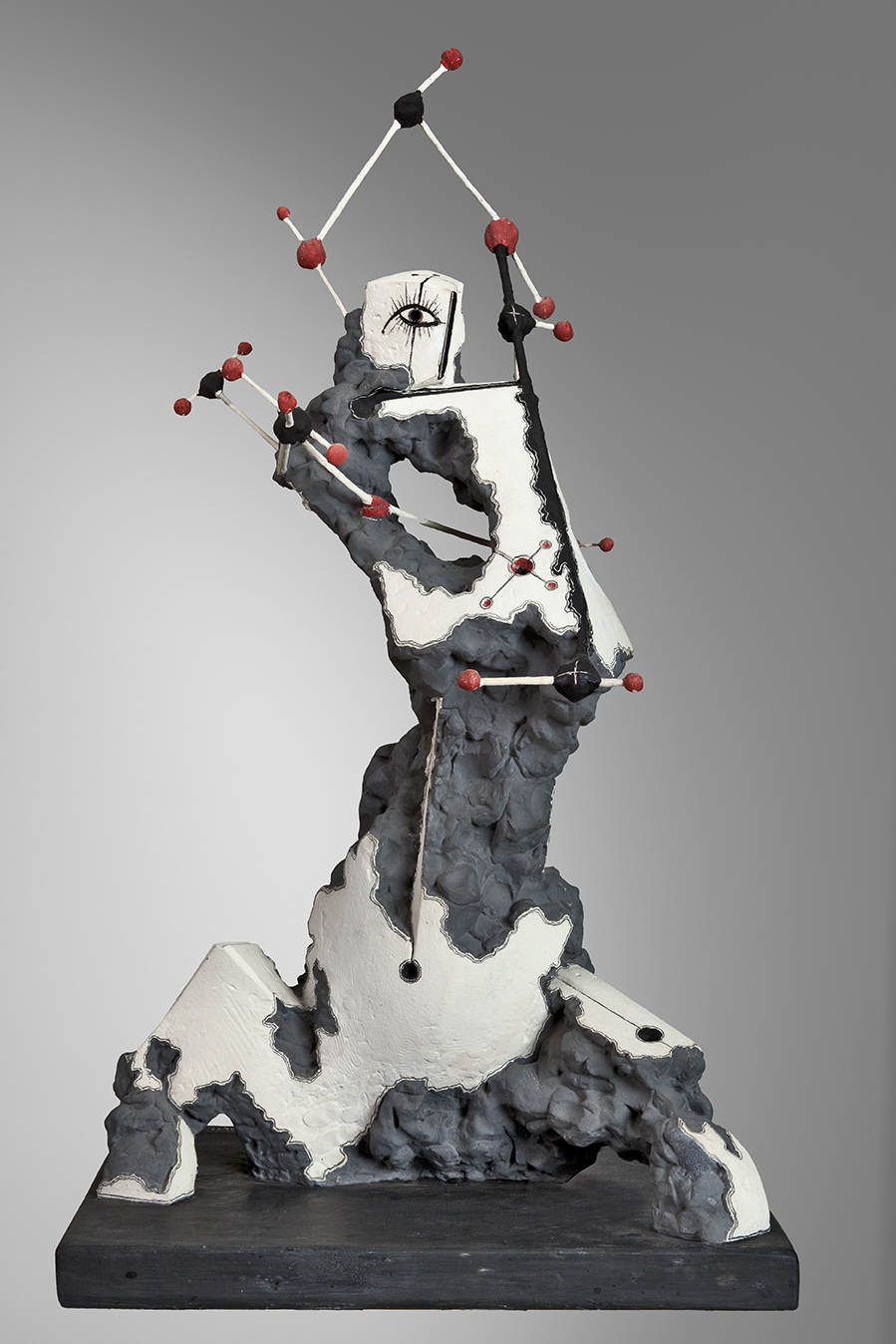Líbero Badíi is one of the emblematic Argentine artists of the 20th century. Born in Arezzo (Italy), he began sculpting in his father’s marble workshop, completing his training in Buenos Aires with Ernesto Soto Avendaño and Carlos de la Cárcova. In his first carvings, there is an evident closeness to the pieces of the Englishman Henry Moore. In this period of his production, the construction of his work is linked to a classic idea of sculpture, where the use of concave and convex volumes build the materiality of the work and are articulated with the space that surroundsit.
Upon completing his studies, he began a trip through northern Argentina, which later expanded to Bolivia, Peru and Ecuador. For him, America meant the possibility of opening up to new imaginative fields that broke with his academic training. Two years later, he visited France, Spain and Italy. In search of his own plastic language that would renew the artistic tradition, his works are the result of the crossing between the forms of pre-Hispanic art and the language of the European avant-garde of the first half of the 20th century. At the end of the 60s, Badíi began to develop the concept of “The Sinister”. In the words of the sculptor: What escapes human possibilities is sinister. This concept is approached by the artist as the opposite of the classic understood as the aesthetic foundationsinherited from the great masters.
He died in Buenos Aires in 2001. His work is part of national and international collections, such as those of the National Museum of Fine Arts in Buenos Aires, the Museum of Modern Art in New
York and the Museum of Modern Art in Paris, among others.


 Baddi Libero
Baddi Libero